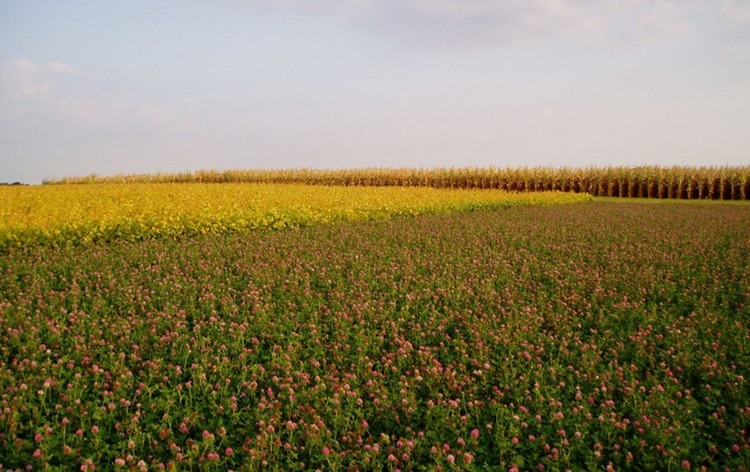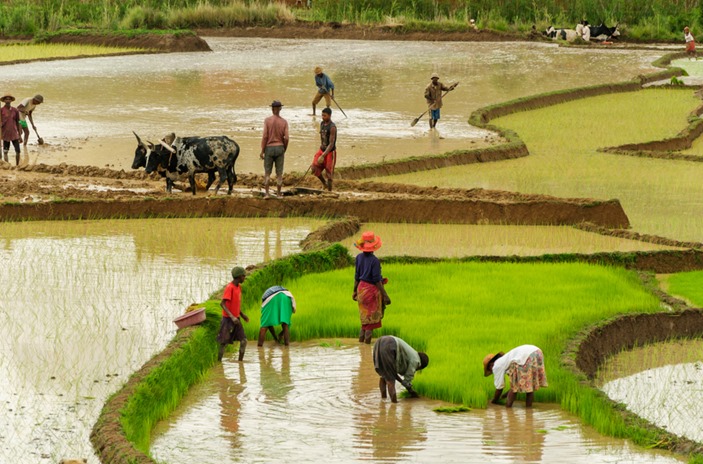
Sustainable agriculture is a popular concept. It’s warmly embraced as a guiding light for the future of food production. But there is still a great deal of disagreement about what the concept actually means and entails. There is broad agreement about what sustainable agriculture’s main aim should be. It ought to optimise locally available natural resources without negatively affecting the resource base. Social integrity is also a priority. For example, the welfare of animals and labourers should be taken care of.
Here’s the Sustainable Agricultural Institute’s definition:
… adopting productive, competitive and efficient production practices, while maintaining or improving the natural environment and the global ecosystem, as well as the socioeconomic conditions of local communities.
Conventional agriculture differs. It aims to maximise yields and economic returns. This is often done with little regard for the environment and the impact on society. Sustainable agriculture, on the other hand, is designed to address problems like environmental pollution from excessive use of fertilisers. It also tries to arrest the collapse of farm economies because of rising production costs and to preserve social integrity. Intensive agriculture is nevertheless expected to increase because of population growth and greater demand for food as incomes rise. But unless agricultural intensification incorporates sustainable practices, environmental and social problems will persist. We believe that it’s possible to increase production without doing harm. This involves a process of sustainable intensification.
How to intensify without doing damage
Sustainable intensification envisages increasing productivity while decreasing the agriculture’s negative impact on the environment. This approach to farming was initially aimed at smallholders in developing countries. But the concept has now been widely adopted by other agrarian sectors. In addition, agriculture in Africa is better positioned to adopt the key tenets of increasing production without causing undue harm. This is because agriculture on the continent has generally been less intensive. It has always incorporated aspects of sustainability practices.

For example, very few chemicals have been used. There have been higher levels of social integrity including environmental protection, economic viability and social integrity. This can be seen from the fact that African farmers have always employed practices like crop rotation and inter-cropping. These were initially dismissed in favour of monoculture and plantation agriculture as colonialism took hold.
The difficulty of measuring success
Various tools have been developed to assess progress towards sustainable agriculture. But a lack of agreement about what should be measured, and how, has led to a great deal of confusion and frustration, particularly for farmers. It has also left consumers unsure about what really constitutes sustainable agricultural production. But agricultural systems are complex and diverse. This makes the use of a single blueprint for assessment impractical. Nevertheless, success can be measured by using appropriate environmental, economic and social parameters. These can give an indication of whether certain trends are stabilising, rising or declining. The three most important dimensions to measure are environmental protection, economic viability and social equity. But all will be affected by location, production system, scale of operation and time of assessment. Measuring nitrogen balance – the measure of nitrogen input through fertiliser minus output through crop uptake – is a good example. This is an important environmental indicator in field crops but not as much in greenhouses.
Looking at the problem from different angles
For any indicators to work properly they need to involve researchers as well as local farmers. But adopting the appropriate principles and technologies requires an interdisciplinary view. Unfortunately, agricultural training institutions in Africa limit graduates to single disciplines. Academic institutions need programmes that break away from this. It is also vital to synchronise assessment tools across all production systems. Agricultural production is just one component of the food system. It also includes food transportation, distribution, processing, trade, policy, consumption and food waste production. Sustainability assessments must cover the entire food system. It requires a diverse team of experts from different disciplines. But to achieve this two problems need to be overcome: tensions between disciplines and the cost of bringing experts together. One solution is to develop training programmes that produce researchers with expertise across a variety of fields. If these problems can be solved it will see Africa take the lead in the drive to achieve sustainable agriculture.
Source:
- theconversation.com, 1 September 2016